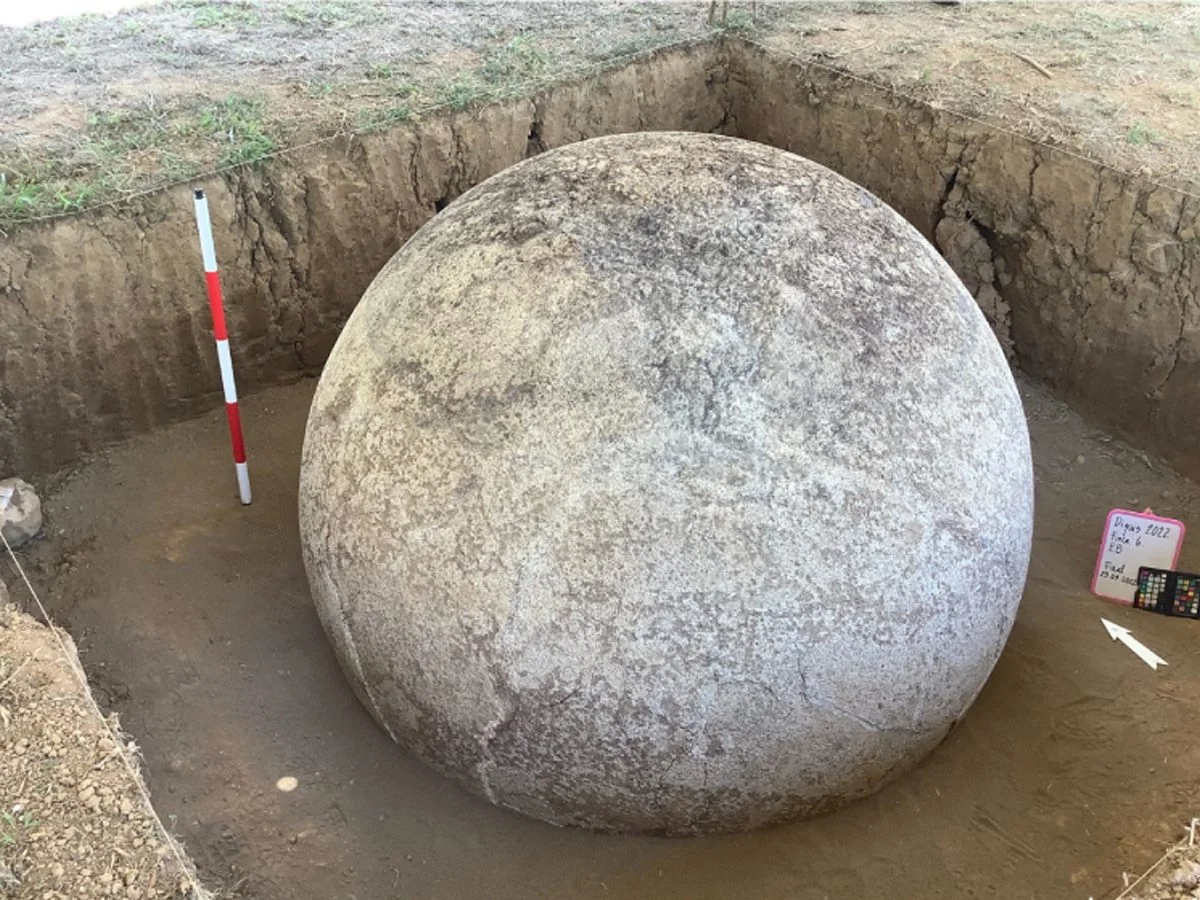Archaeologists have excavated giant stone spheres in the Diquís Delta of Costa Rica.
Stone spheres are found on the small island of Isla del Caño and the Diquís Delta, where over 300 stone Petrospheres have been previously identified from the Diquís culture.
The Diquís culture emerged in the Valley of the Rio Grande de Térraba, where they established complex social, economic, and political systems to govern their society.
During the Chiriquí Period between AD 800 – 1500, many settlements grew into large communities around the alluvial lands of the Térraba River and its main tributaries, constructing large structures using round-edged boulders, paved areas, burial sites, and circular or rectangular mounds with stone walls.
The Diquís reached an apex of cultural development during this period, with Diquís artisans creating elaborate ceramic, bone, and gold objects, and sculpturing stone spheres in important zones within the settlements. Stone spheres were also placed in alignments in public plazas, or along the approach to the dwellings of the ruling elite or chieftains.
Archaeologists from the Instituto Nacional de Antropología e Historia (INAH) and the National Museum of Costa Rica (MNCR) have excavated 6 stone spheres as part of a wider project to preserve the monuments.
The team focused on the Finca 6 archaeological site located in the canton of Osa in the Puntarenas Province, in which stone spheres have deteriorated due to alterations derived from the constitution of the rock, damage caused by humidity, and floods resulting from hurricanes and tropical storms.
Isabel Medina-González from ENCRyM-INAH said: “The intervention included surface cleaning and stabilisation through the application of edging and patches of enriched lime-sand mortar to slightly increase the hardness, as well as the placement of protective layers with mortar “.
The spheres were then reburied with layers of geotextile, gravel and sand. “We have verified that this allows a homogenisation of temperature and humidity that avoids contact with the acidity of the clay soil and prevents the growth of vegetation in the vicinity.” said Javier Fallas from MNCR.
Header Image Credit : INAH





